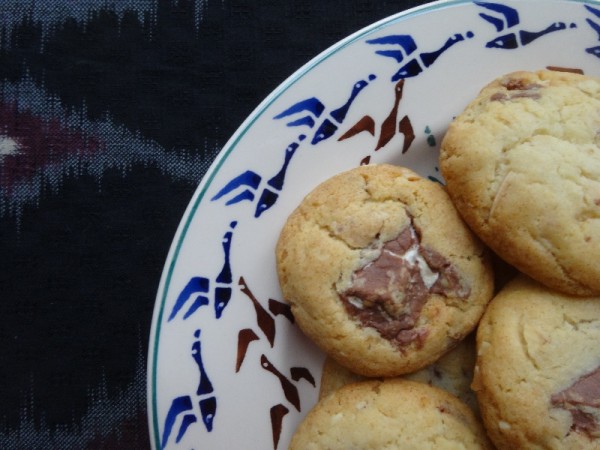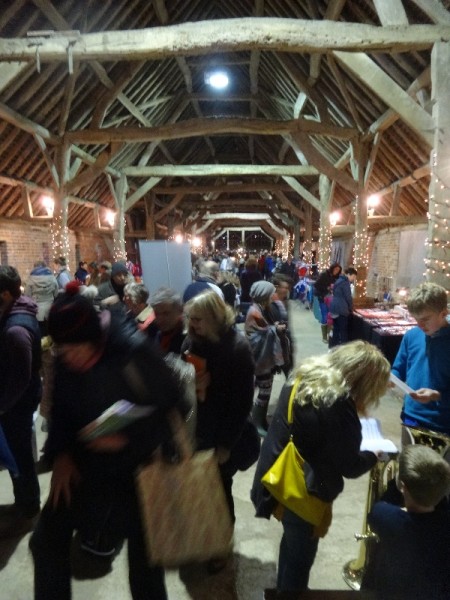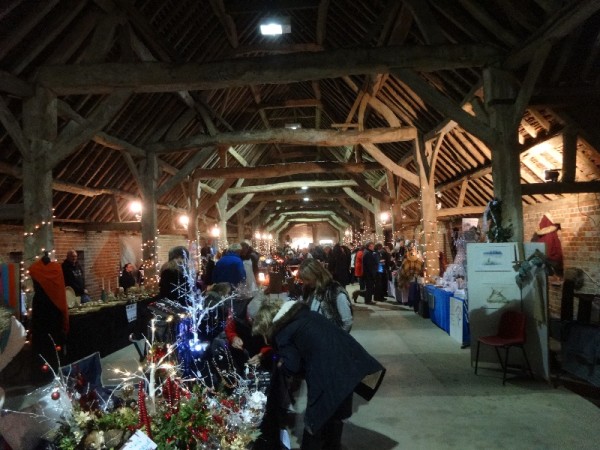For my first attempt at Fair Isle I decided to take it gently and opted for a single band of patterning around the bottom of the jumper and sleeves. I used my old favourite pattern, Debbie Bliss’s 2 colour raglan sweater (from Baby Cashmerino 5) and married it with a design for the Fair Isle which appears elsewhere in the same book. I’m sure one day I will move on to proper Shetland wool as I’m a bit of a fabric and fibre purist but at the moment I’m happy to continue with Debbie Bliss’s Baby Cashmerino which washes well and isn’t pilling or going out of shape.
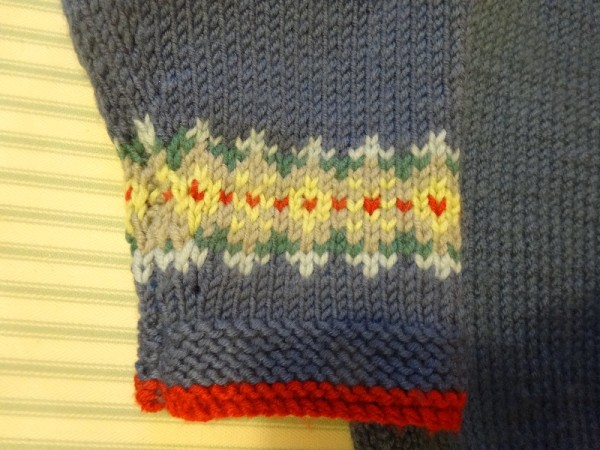
Boy’s jumper: detail of Fair Isle pattern (both jumper pattern and Fair Isle are from Debbie Bliss’s Baby Cashmerino book 5)
I enjoyed doing the Fair Isle, especially because – simple as it looks – the yellow wool (more of a pale lime green) forms 2 different motifs over 8 stitches horizontally. Once I got into the right rhythm (muttering lime,lime,lime/grey,grey,lime,grey,grey) for the 8 stitch repeat, it was great fun and deeply satisfying.
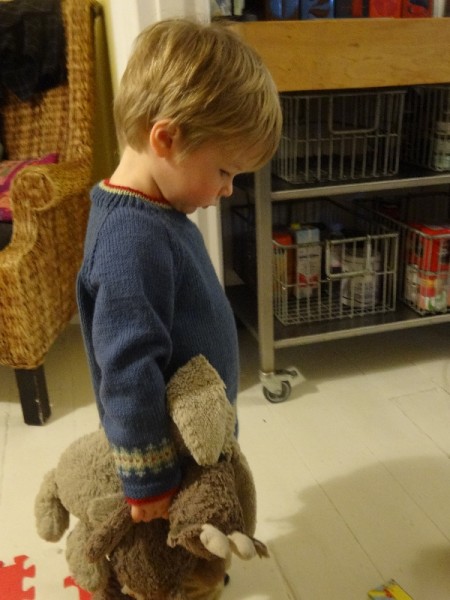
Boy’s jumper: detail of Fair Isle pattern (both jumper pattern and Fair Isle are from Debbie Bliss’s Baby Cashmerino book 5)
I finished this a few weeks ago but have only just delivered it. The recipient had just got out of a car after a long journey from his great granny in North Wales and was a buzz of activity after his confinement. The wonder was that as many as 2 photographs show him still and even contemplative.
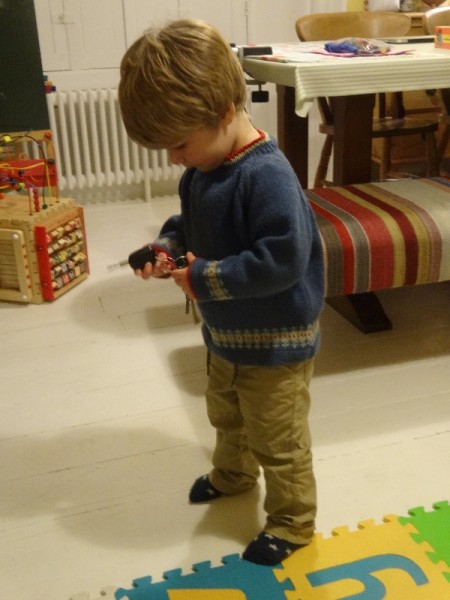
Boy’s jumper: detail of Fair Isle pattern (both jumper pattern and Fair Isle are from Debbie Bliss’s Baby Cashmerino book 5)
On a different note. I learned to drive in 1999 on my third attempt*, not much encouraged by the examiner telling me if I had left it a week I would have failed (the pass level was about to change). I never felt happy in charge of a car, but then again our family car had the unfortunate habit of leaping out of first gear and once, being encouraged into fifth gear on the Dorchester bypass, the gear knob actually came off in my hand.
Well, I lived in London then and tended to use public transport most of the time. About 10 years ago, I came to live in the county and knew I had to drive. Lots of lessons later I thought I might be a hopeless case. Then… in summer the clutch went on our car in Devon and I muttered to the vicar that I thought perhaps we might both benefit from an automatic… say in a year’s time. When chiming the right note, thought is master to the action with the vicar and the next day, with no warning, he appeared saying we should go and try out an automatic car he had just had a look at on the way back from the dentist.
We bought it. At first I made little journeys locally, then to Henley and back until last week we set off for the western Cotswolds with me driving (thinking the vicar might take over before joining the A40). Not only did I drive to our village destination but the next day I drove into Cheltenham, circled around looking for parking and then in the afternoon did the return journey. The next day I drove home to Oxfordshire.
I am candescent with joy. I cannot express the delight I feel at finally being at ease in a car … and even enjoying driving. I had begun to think this would never happen. And the funny thing is the more I sheepishly say to people that I wouldn’t be driving if we didn’t have an automatic, the more people I discover are driving an automatic too. Do we in England have a theoretical thing about serious people not driving automatics only to find that in fact their latest car is just that. Why oh why did I take so long to work this out? The moral of this tale is not only never give up … but do make sure there’s not an easier solution that’s being overlooked because it seems just too easy. And let’s be quite clear there is no greater merit in taking the more difficult route (unless you’re Sir Ranulph Twisleton-Wykeham-Fiennes, or the most nutty of mountaineers) for permanent failure may lie that way. Onward and upward I say but with judicious glances at sidewards solutions.
*27 November 2015 The Times newspaper: Best drivers pass their test 3rd time.




